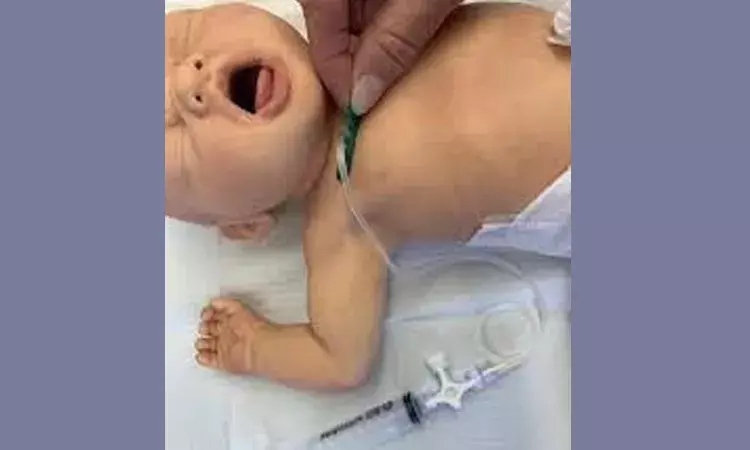- Home
- Medical news & Guidelines
- Anesthesiology
- Cardiology and CTVS
- Critical Care
- Dentistry
- Dermatology
- Diabetes and Endocrinology
- ENT
- Gastroenterology
- Medicine
- Nephrology
- Neurology
- Obstretics-Gynaecology
- Oncology
- Ophthalmology
- Orthopaedics
- Pediatrics-Neonatology
- Psychiatry
- Pulmonology
- Radiology
- Surgery
- Urology
- Laboratory Medicine
- Diet
- Nursing
- Paramedical
- Physiotherapy
- Health news
- Fact Check
- Bone Health Fact Check
- Brain Health Fact Check
- Cancer Related Fact Check
- Child Care Fact Check
- Dental and oral health fact check
- Diabetes and metabolic health fact check
- Diet and Nutrition Fact Check
- Eye and ENT Care Fact Check
- Fitness fact check
- Gut health fact check
- Heart health fact check
- Kidney health fact check
- Medical education fact check
- Men's health fact check
- Respiratory fact check
- Skin and hair care fact check
- Vaccine and Immunization fact check
- Women's health fact check
- AYUSH
- State News
- Andaman and Nicobar Islands
- Andhra Pradesh
- Arunachal Pradesh
- Assam
- Bihar
- Chandigarh
- Chattisgarh
- Dadra and Nagar Haveli
- Daman and Diu
- Delhi
- Goa
- Gujarat
- Haryana
- Himachal Pradesh
- Jammu & Kashmir
- Jharkhand
- Karnataka
- Kerala
- Ladakh
- Lakshadweep
- Madhya Pradesh
- Maharashtra
- Manipur
- Meghalaya
- Mizoram
- Nagaland
- Odisha
- Puducherry
- Punjab
- Rajasthan
- Sikkim
- Tamil Nadu
- Telangana
- Tripura
- Uttar Pradesh
- Uttrakhand
- West Bengal
- Medical Education
- Industry
Lung ultrasound bests X ray for diagnosing neonatal pneumothorax: Study

China: Lung ultrasound (LUS) has better sensitivity and specificity than chest X-ray and also took less time to perform for the diagnosis of pneumothorax in neonates, suggests a recent review in the journal Ultrasound in Medicine and Biology.
Neonatal pneumothorax is common and a life-threatening condition. Chest X-ray is the main diagnostic method but is limited by some defects. Newborns are especially at risk for latent effects from repeated exposure to ionizing radiation, and it can be difficult to detect pneumothorax with chest x-ray. In recent years, lung ultrasound has emerged as a diagnostic method. The aim of the review by Qiang Fei, National Clinical Research Center for Child Health, Hangzhou, China, and colleagues is to compare the diagnostic accuracy of lung ultrasound versus chest X-ray in neonates with pneumothorax.
For the purpose, the researchers searched both Chinese- and English-language databases for prospective studies on the diagnostic accuracy of lung ultrasound in neonates with pneumothorax. The search yielded 528 studies, of which 8 full texts were assessed for eligibility against the inclusion/exclusion criteria.
Key findings of the study include:
- The overall specificity and sensitivity of lung ultrasound in the diagnosis of neonatal pneumothorax was 98% and 99% respectively.
- The diagnostic odds ratio was 920.01, and the area under the curve was 0.996 7
- The chest X-ray was always taken as the reference standard with a sensitivity of 82%, a specificity of 96% and a diagnostic odds ratio of 44.54.
- Study analysis studies indicated that the sensitivity of lung ultrasound in diagnosing pneumothorax excepted chest X-ray as the single diagnosis criteria was 98%, the specificity was 100% and the diagnostic odds ratio was 965.39, showing a higher accuracy than chest X-ray.
"In conclusion, lung ultrasound had better sensitivity and specificity than chest X-ray in the diagnosis of pneumothorax," wrote the authors. "Some ultrasonic signs (absence of lung sliding or B-lines) had a high sensitivity in the diagnosis, which could be used to diagnose pneumothorax. Lung point could help judge the severity of pneumothorax. Its presence indicates that pneumothorax is mild to moderate; otherwise, pneumothorax is severe.
"Lung Ultrasound, a Better Choice for Neonatal Pneumothorax: A Systematic Review and Meta-analysis," is published in the journal Ultrasound in Medicine and Biology.
DOI: https://www.umbjournal.org/article/S0301-5629(20)30519-6/fulltext
Dr Kamal Kant Kohli-MBBS, DTCD- a chest specialist with more than 30 years of practice and a flair for writing clinical articles, Dr Kamal Kant Kohli joined Medical Dialogues as a Chief Editor of Medical News. Besides writing articles, as an editor, he proofreads and verifies all the medical content published on Medical Dialogues including those coming from journals, studies,medical conferences,guidelines etc. Email: drkohli@medicaldialogues.in. Contact no. 011-43720751


